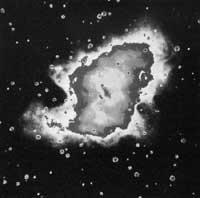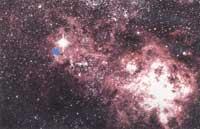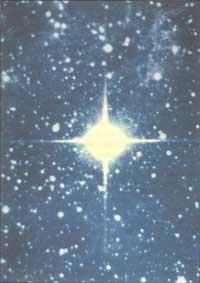Neutrinos in chemistry
1994/02/01 Elhuyar Zientzia Iturria: Elhuyar aldizkaria
Neutrinos are high-speed subatomic particles that barely act on matter. However, astronomers say that by interacting with matter very few elements can emerge on Earth. In a work done by American and French astronomers, they have proposed a way of measuring the influence of neutrinos, that is, observing the stars of the oldest galaxy and measuring their content in beryllium and boron.
According to classical theories, beryllium and boron, the clash of cosmic rays with heavy particles, were formed and the elements mentioned were captured when the Earth and the Sun arose.

However, in 1990, Stan Woosley and his friends at the University of California claimed that boron could be due to neutrinos released into the explosions of massive stars. A star of great mass by becoming supernova can release approximately 1058 neutrinos. A part of the star's carbon could become boron.
Now, researchers from the University of Minnesota, Keith Olive and Sean Scully, and the Paris Institute of Astrophysics, Nikos Prantzos and Elisabeth Vangioni-}, applied this neutrino process to models that indicate the evolution of the Milky Way. According to them, if the neutrino process generates boron, when it was a young galaxy boron would be much more abundant than beryllium. Beryllium, on the other hand, appeared later in the Milky Way, as it needs a longer process for its formation.
The results of this study will be published on April 1, 1994 in the journal “The Astrophysical Journal”, in which Olive and his friends point out, among other things, that neutrinos can generate new elements.

Gai honi buruzko eduki gehiago
Elhuyarrek garatutako teknologia






